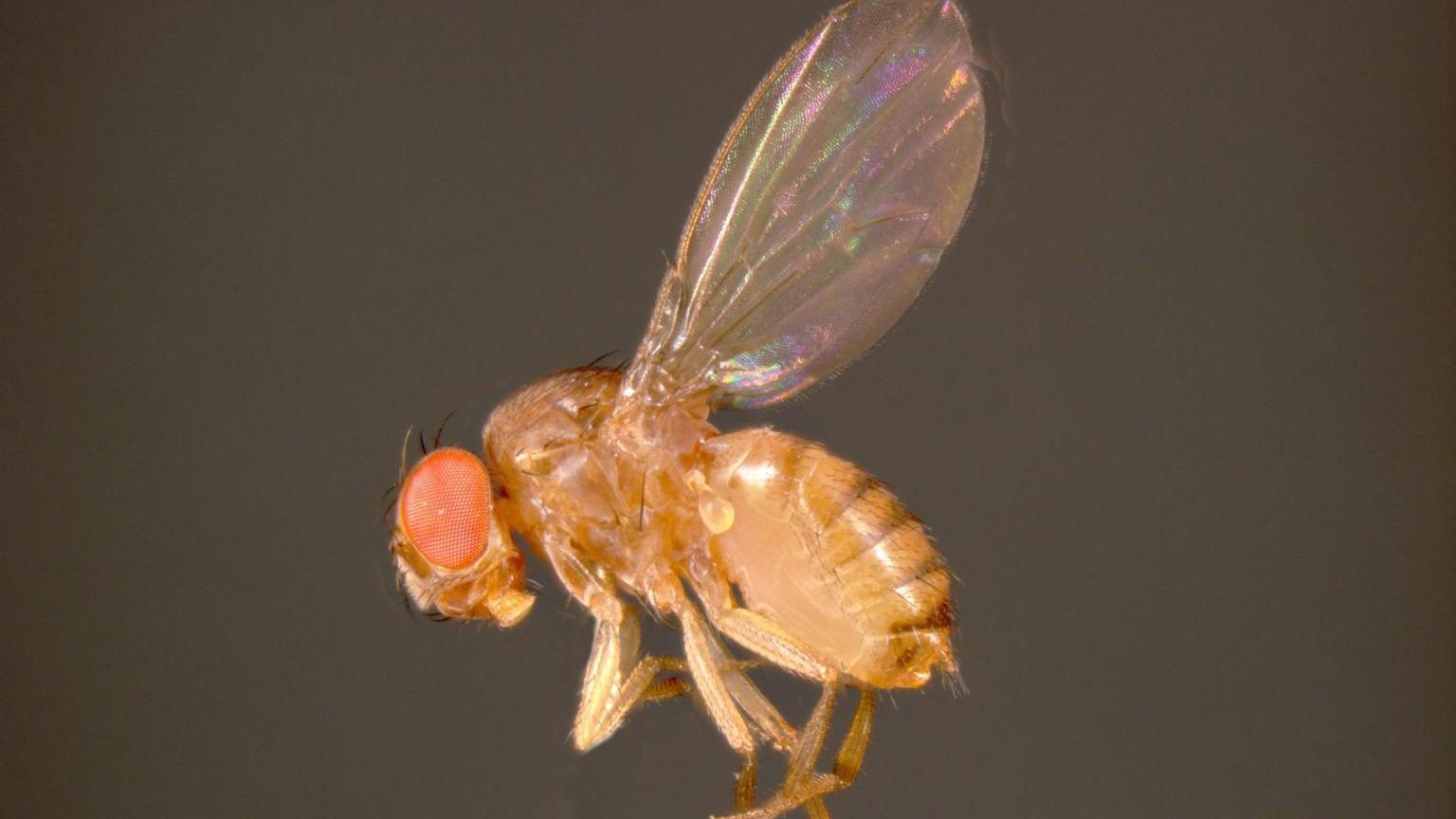About fruit flies
-
Fruit flies are primarily pests in the kitchen area of the home. Late summer and fall are when populations are the greatest indoors.
-
They are about 1/8 of an inch long, dull tan to brownish yellow or brownish-black in color. They are one of the smallest flies found inside the home.
-
Their eyes are usually bright red.
-
The larvae are whitish, 1/4 of an inch long, eyeless and legless, and taper towards the head.
-
The adult flies are attracted to overripe fruits, vegetables, and fermenting foods. Wine, beer, fruit juice, and vinegar also attracts them.
-
The female fruit fly lays eggs on the surface of the food or fermenting liquid.
-
The larvae feed for 5 to 6 days and then crawl to drier areas to pupate. The entire life cycle takes 8 to 10 days.
Management
-
The primary control for fruit flies is sanitation. Eliminate larval food and development sites.
-
Keep fruit stored in the refrigerator.
-
Rinse and drain bottles and cans that are to be recycled.
-
Squeeze out mops thoroughly and dry. There may be enough food and moisture to complete development on damp mops or towels.
-
Use a commercial fruit fly trap to capture adults or make your own. Simply pour apple cider vinegar into the bottom of a glass jar and add a drop of dish soap, cover the top with plastic wrap or a small plastic bag, and secure the plastic tightly around the rim with a rubber band. Then poke a tiny hole in the plastic to allow the flies to enter but not escape.
Rev. 2020
